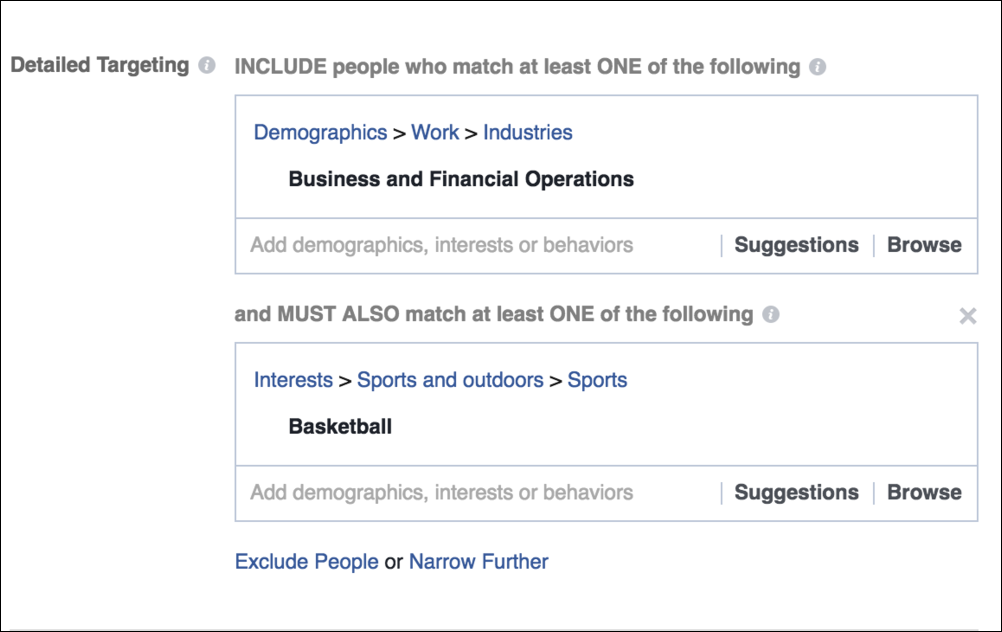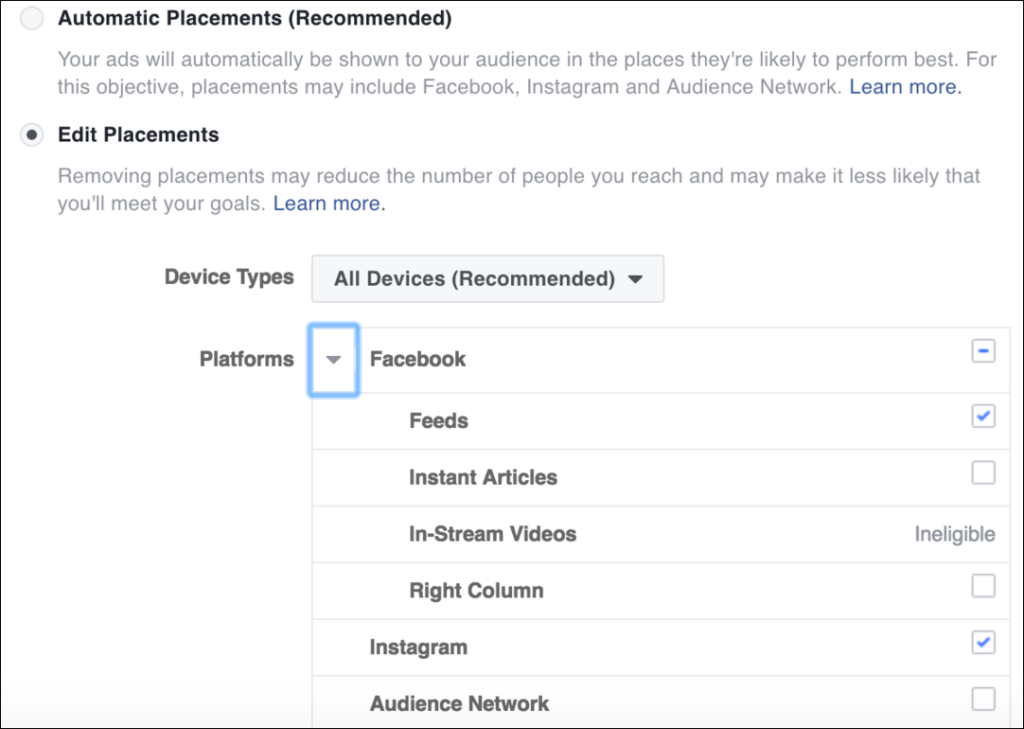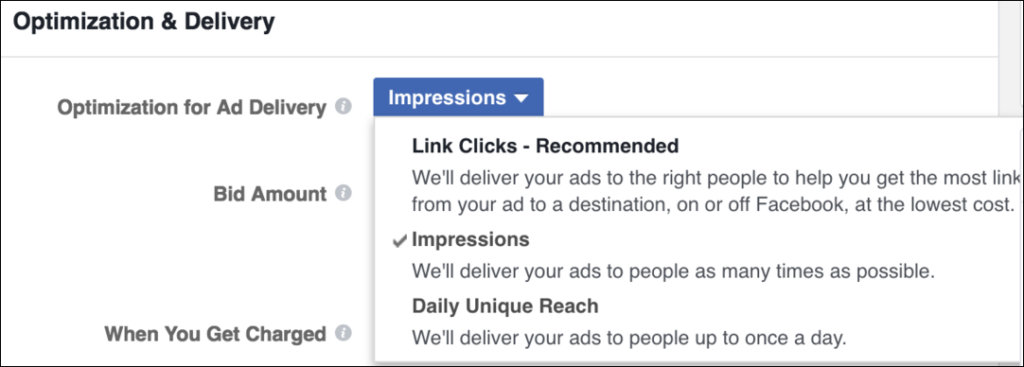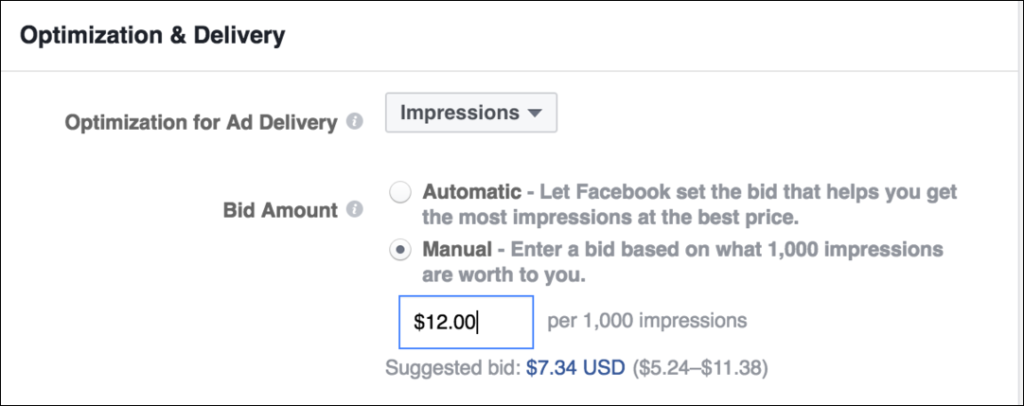So you’ve got an alumni audience you want to target with a Facebook ad. Maybe you’ve got a solid clicks-to-website ad planned, or you’re looking to start a conversation with a page post engagement ad. Maybe you’ve got a solid clicks-to-website ad planned, or you’re looking to start a conversation with a page post-engagement ad. (If that was all Greek to you, I recommend reading my last post.)
Once you’ve built the ad itself, the real fun comes at the ad-set level. What are Facebook ad-sets? As a quick refresher for those who haven’t spent much time exploring Facebook’s Ads Manager or Power Editor, every Facebook ad you run consists of:
- A campaign: The objective, such as securing page post engagement or clicks-to-website.
- At least one ad set: Defined by the Facebook ad set scheduling, population targeting, and bid amount.
- At least one ad: The actual content you see on your Facebook timeline.
The ad level is self-explanatory: write some text, add a picture, and insert a link. The campaign level is also relatively simple once you understand the basic types of ads.
The ad-set level, however, can be quite tricky. It requires some practice to master.
Below are six tips and tricks to help you perfect your Facebook ad sets and get the most eyes possible on your school’s Facebook content. Note that these recommendations and screenshots are based on building ads within Facebook’s Power Editor, not Ads Manager.
1. Ad sets compete against each other, but ads within an ad set do not.
Facebook ads sell on an auction system, meaning that the ads within the highest bidding ad set are the ones that get shown to the target audience. This means that if you’re running two ad sets simultaneously—even if they’re inside the same campaign—you run the risk of bidding against yourself in an auction and driving up the price.
So how do you create multiple ad sets in Facebook? Either schedule your ad sets to run on different days or use exclusion targeting (more on that below) to ensure the ad sets don’t have overlapping populations.
If you’re running ads to identical populations, however, you can put multiple ads into the same ad set and those ads will not compete against each other.
2. Run multiple ads within the same ad set to A/B test your messaging.
Not only do ads within an ad set not compete with each other in the auction, but Facebook will also report the results of each ad separately.
This allows you to run multiple ads to the same population at the same time—without increasing the cost. At the end of the campaign, you can review the data to determine which text or picture performed best for your chosen population. These findings can help inform the creative direction for future ad campaigns, direct mail, and other marketing.
3. Use exclusion and “narrow further” options to target your exact audience.
Pay close attention to the wording of the detailed targeting options: “INCLUDE people who match at least ONE of the following.”
This means that while you may intend to target alumni who work in the finance sector and are interested in basketball, you could accidentally end up targeting people who went to your school OR work in the finance sector OR are interested in basketball—which will result in your ad being shown to millions of the wrong people.
Hit “Narrow Further” to ensure your audience meets all of your criteria, as shown below:

Exclusion targeting, on the other hand, allows you to remove people from your intended audience. Exclusion targeting is a great way to prevent your ad sets from bidding against each other.
For example, run one ad set to alumni who work in the finance sector and another ad set to alumni except for those who work in the finance sector. You can also include or exclude by location (e.g., “Exclude people living within 50 miles of New York City”), which can be very helpful when marketing regional events.
4. Edit your placements.
Unless you edit your ad placements, Facebook automatically sets your ads to run in several different places. These may include the desktop newsfeed, mobile newsfeed, desktop right-hand column, Instagram, and other mobile apps and websites (called the “Audience Network”).
To determine what devices and platforms to run your ad(s) on, think about your target audience. For example, an ad to an older population probably doesn’t need to run on Instagram. Likewise, young alumni do most of their Facebook browsing on mobile, so you’ll want to be sure to include that placement when targeting a younger audience.
I typically run on both desktop and mobile, but never in the right-hand column and rarely, if ever, on “Audience Network.” My experience is that right-hand column ads perform poorly and are visually unappealing. Instagram ads can perform well depending on your audience, but they have additional image requirements and are often more expensive than Facebook ads.

5. Bid for impressions.
Okay, stay with me here. Despite the fact that I recommend click-to-website ads for most purposes, I recommending bidding at the ad-set level based on impressions, not link clicks.
Your actual options here—Facebook calls it “optimization for ad delivery”—will depend on the type of ad you set at the campaign level. With click-to-website ads, you can choose to bid on link clicks, impressions, or unique daily reach. The one you choose will alter the potential population of your ad set. For instance, choosing link clicks means that Facebook will optimize your ad by surfacing it primarily to people who are likely to click on ads.

Because my philosophy is to think of Facebook ads as billboards, I’m more interested in getting as many views as possible than in restricting my audience to frequent ad-clickers. I recommend optimizing for impressions, or occasionally, unique daily reach.
6. Manually set your bid.
At this step, you can choose to bid automatically and “let Facebook set the bid that helps you get the most reach at the best price.” Based on my own experience, however, I usually get better, cheaper results by manually setting a bid.
If you’re optimizing for impressions, you’ll be prompted to set a maximum price you’re willing to pay for 1,000 impressions. The recommended price range will depend on the audience you’ve set, and could be anywhere from a few dollars to over $15 per thousand impressions.
I like to bid high, and often bid even higher than the “suggested bid” range that Facebook provides. I typically find that my average cost ends up well below my maximum bid, but a high bid increases the size of the potential audience you can reach per day.

It’s a lot, I know! The best way to master the Facebook ad set is to just start using it. Play around with different targeting options (the amount of information Facebook knows about its users is incredible) and run a few ads to get a sense of reasonable bids based on your audience. With practice comes ad-set proficiency.
Want to see more? Check out our new Facebook Advancement series: Part 1, Part2, Part 3, Part 4
Emily Baselt Steiger is a fundraiser, marketer, and digital strategist. By day she’s the assistant director for alumni giving at The Westminster Schools in Atlanta and by night she’s a freelance Facebook ad architect, digital strategy consultant, and avid whale enthusiast. Her other interests are teasingly diverse. Connect with her on LinkedIn and follow her on Twitter.